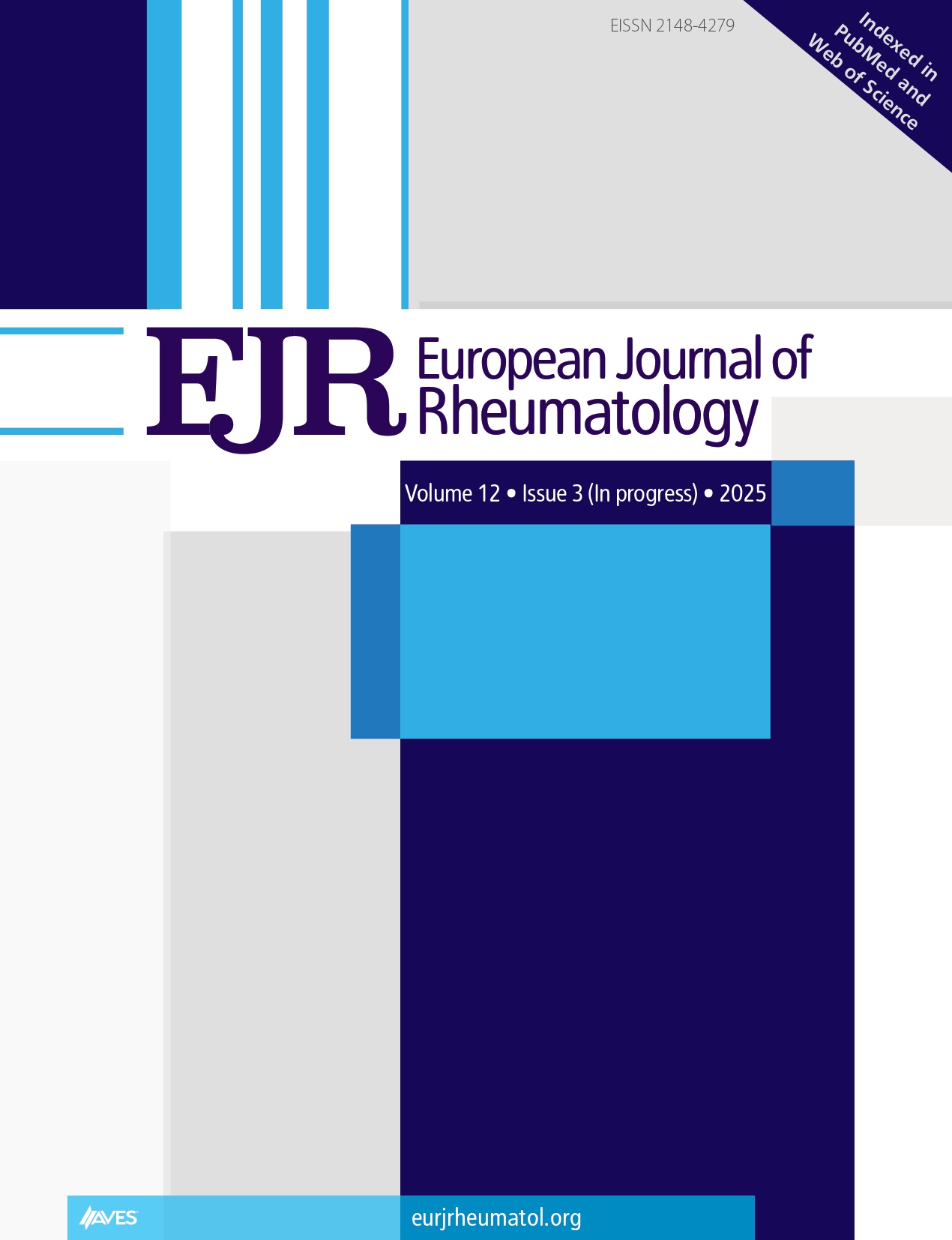
The Frequency and Importance of Subchondral Radius Cysts (Geodes) in Rheumatoid Arthritis Patients
Main Article Content
Abstract
Background: Geodes are subchondral cysts that appear as radiolucent lesions on conventional radiography. The aim was to identify the characteristics of radius geodes in rheumatoid arthritis (RA) patients from a biologic disease-modifying anti-rheumatic drug (bDMARD) cohort.
Methods: The most recent anterior-posterior standard hand radiographs from the first 500 of 2355 patients in the HUR-BIO (Hacettepe University Rheumatology Biologic Registry) database were evaluated to analyze the details of geodes. Demographic and clinical characteristics were analyzed and compared between patients with geodes and those without.
Results: From 500 patients, 448 had radiograph qualified enough to be interpreted and resulted in 63/448 (14.1%) having geodes. When comparing patients with and without geodes, differences were observed in male gender, anti–cyclic citrullinated peptide (CCP) positivity, and disease duration. Patients with subchondral cysts had higher Larsen scores in the carpal bones. Among 26 patients with multiple cysts, anti-CCP antibody positivity was more common (P=.04), and a Larsen score of grade 2 or higher was more frequent (P=.02). Additionally, patients with subchondral cysts larger than 50 mm² were more likely to be male (P < .01) and had a higher prevalence of smoking (P < .02).
Conclusion: In a cohort of RA patients receiving bDMARDs, geodes in the radius were observed in 14% of cases. The association between the size and number of geodes with anti-CCP positivity and gender may indicate a link to a more erosive disease progression.
Cite this article as: Kalyoncu U, Ayan G. The frequency and importance of subchondral radius cysts (geodes) in rheumatoid arthritis patients. Eur J Rheumatol. 2025, 12(3), 0124, doi:10.5152/eurjrheum.2025.24124.

